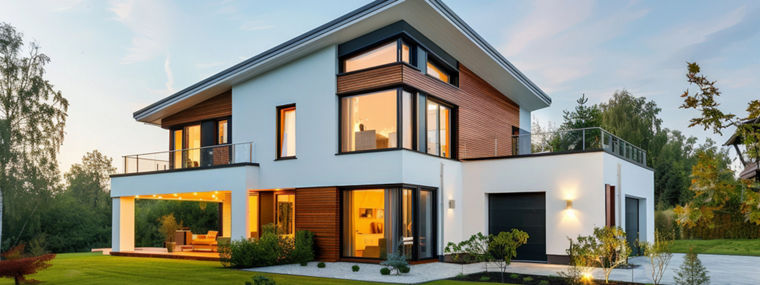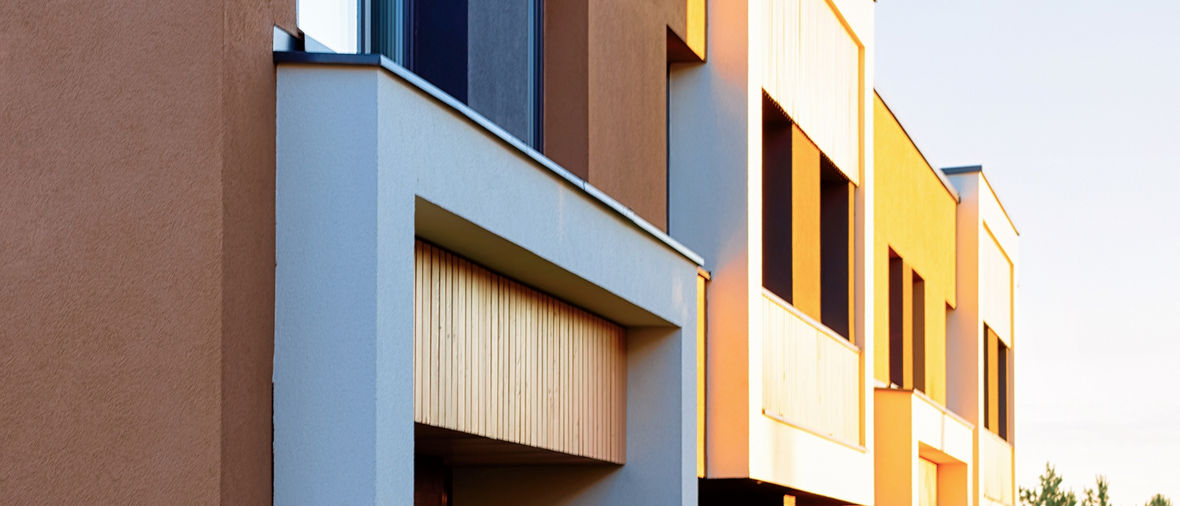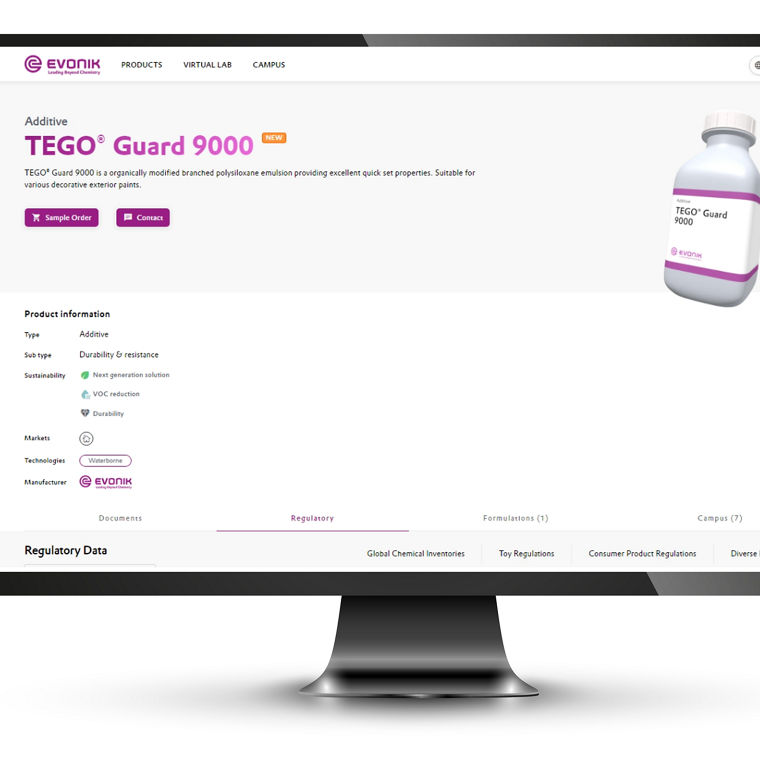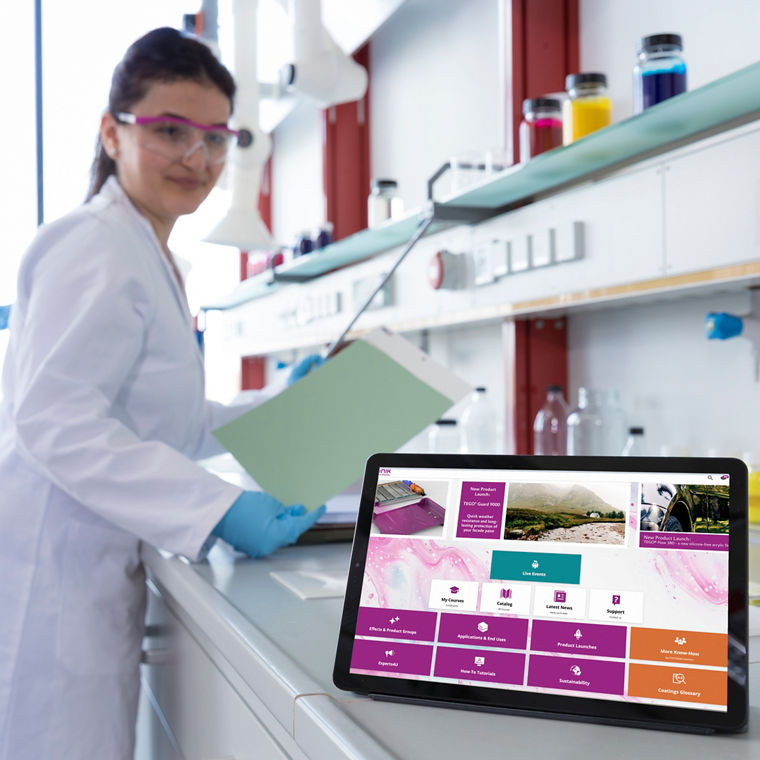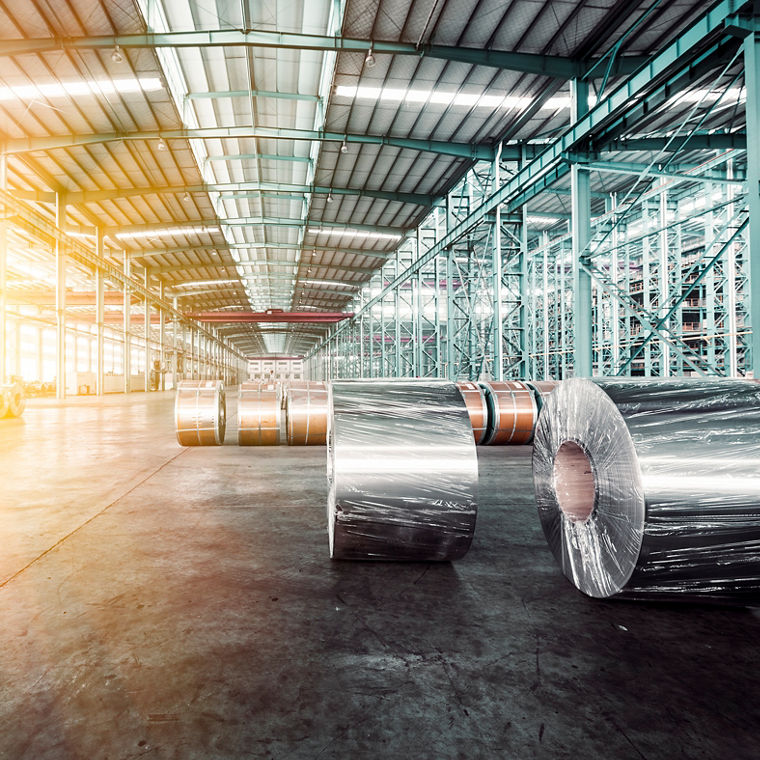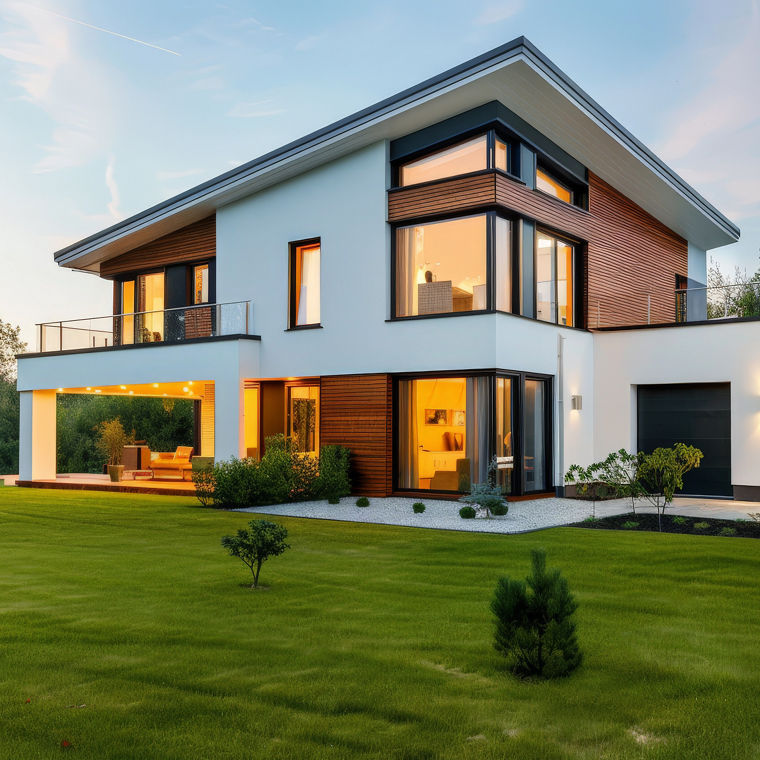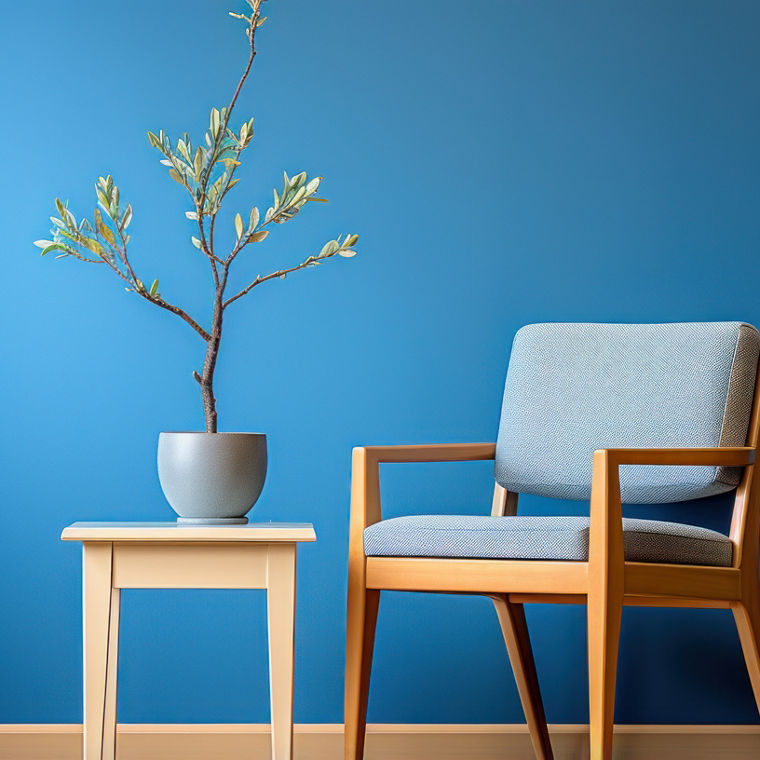Mastering Challenges in Architectural Coatings
Benefits at a Glance
- Enhanced color stability and vibrancy
- Improved durability and resistance to wear
- Cost-effective solutions with reduced environmental impact
- Efficient production and application processes
- Compliance with environmental regulations
Imagine a freshly painted facade that starts to streak and collect dirt after the first rain. This is just one of the common challenges faced by the architectural coatings industry. At Evonik Coating Additives, we have identified the eight biggest challenges for architectural coatings and demonstrate how our additives portfolio can solve them.
Producing architectural paints and coatings cost-effectively and resource-efficiently requires formulators to avoid foam. Foam can disrupt the production process, increase production time, negatively affect paint transfer and application, and cause significant quality loss and surface defects. To master this challenge, we offer a broad range of defoamers that deliver the best balance between efficiency and compatibility. For example, our TEGO® Foamex series is designed for all types of pigment volume concentration (PVC) at every stage of the coating production and application process.
Eight Challenges in Architectural Coatings

Enhancing Mechanical Robustness
Another typical challenge is mechanical stress. Architectural coatings are exposed to mechanical stress from leather, scratchy sponges, wet rags, or human hands. This makes burnishing and wet abrasion resistance two major formulation challenges and important differentiating factors. To overcome this challenge, products are needed that can strengthen the coating film without increasing the viscosity compared to using the same amount of a standard calcium carbonate filler. That's exactly what we've developed with our SPHERILEX®. This synthetic silica features a unique spherical particle morphology, narrow particle size distribution, and very low surface area and porosity.
Dispersions need to be versatile – stable enough to prevent settling but fluid enough for smooth processing and even application. Evonik's rheology modifiers, like AEROSIL® and TEGO® Viscoplus, ensure optimal flow properties, enhancing manufacturing, storage, and application processes. AEROSIL® is primarily used to adjust rheology during production, application, and storage, optimizing the dispersion characteristics and stability of pigments, as well as the flow properties and thickness of applied films. Meanwhile, the TEGO® Viscoplus product range consists of associative polyurethane thickeners that meet the latest industry requirements.
Vibrant and Stable Colors
To achieve vibrant and stable colors, our TEGO® Color Aid acts as a compatibilizer and helps to develop coatings in any desired color. They enhance color acceptance and strength while minimizing the impact on coating properties. Alternatively, our SURFYNOL® products act as dynamic wetting agents for quick wetting of pigments.
Highly white facades and interior wall paints are often what end users desire. Titanium dioxide (TiO2) is a very popular mineral to achieve this because of its strong opacifying properties. However, as demand increases, so do the costs for formulators. We offer TiO2 extenders like SIPERNAT® that partially replace TiO2 to enhance whiteness and hiding power, providing a cost-effective and eco-friendly solution to the industry.
Flexible Application Regardless of Weather Conditions
Harsh environmental conditions can degrade polymers in facade coatings, causing erosion and chalking. Mold growth and dirt absorption negatively affect their appearance. We ensure that the facade remains as beautiful as freshly painted. Our TEGO® Phobe silicone resin emulsions efficiently reduce water absorption of the facade and minimize influence on dirt pickup. With our new additive TEGO® Guard 9000, it is possible to protect building facades from the moment of application – making application more flexible.
Looking at trims, paints must adhere to various substrates from wood to aluminum and withstand high mechanical resistance while maintaining good appearance over a broad range of gloss levels. Our TEGO® Variplus DS 50 and TEGO® Addbond DS 1300 enhance adhesion, gloss, and water resistance, ensuring versatile performance across different surfaces.
Create Outperforming and Future-Proof Coatings
By overcoming all the mentioned challenges, the protection of our environment and climate remains one of the major global challenges of our time. For architectural coatings, this means they have to comply with an increasing number of regulations. To formulate future-proof coatings, we support you with our profound knowledge of regulations, our High Throughput Equipment (HTE) for automated testing, and our application technology laboratories across the globe. Backed by this knowledge and technological capabilities, we develop additive solutions and technologies that outperform with low impact on footprint by using resources more efficiently and minimizing emissions. And we go beyond: we develop products and technologies that also reduce the environmental impact of our customers and end users to maximize the handprint.
